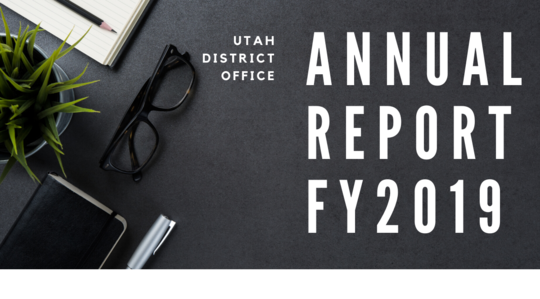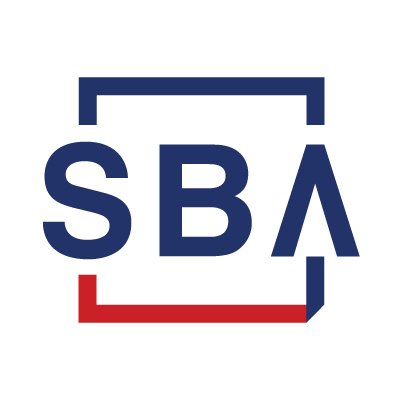Paycheck Protection Program Flexibility Act Enacted
SALT LAKE CITY – The Paycheck Protection Program (PPP) Flexibility Act was signed into law last week providing small business owners more time to apply for loan forgiveness. This will affect over 4.5 million small businesses whose loans total more than $500 billion according to a joint statement from SBA Administrator Jovita Carranza and U.S. Treasury Secretary Steven T. Mnuchin.
“This bill will provide businesses with more time and flexibility to keep their employees on the payroll and ensure their continued operations as we safely reopen our country. We look forward to getting the American people back to work as quickly as possible," Carranza and Mnuchin said.
“This will extend the covered period for loan forgiveness from eight to 24 weeks after loans were disbursed, so small business owners can keep their employees paid. It also gives more flexibility in how the funds are used." said SBA Utah District Director Marla Trollan.
New Paycheck Protection Program numbers were also announced for Utah. "In Utah, 48,572 loans have been approved valued at more than $5.2 billion," Trollan said.
Upcoming Procedures Under the New PPP Flexibility Act:
SBA, in consultation with Treasury, will promptly issue rules and guidance, a modified borrower application form, and a modified loan forgiveness application implementing these legislative amendments to the PPP. These modifications will implement the following important changes:
- Extend the covered period for loan forgiveness from eight weeks after the date of loan disbursement to 24 weeks after the date of loan disbursement, providing substantially greater flexibility for borrowers to qualify for loan forgiveness. Borrowers who have already received PPP loans retain the option to use an eight-week covered period.
- Lower the requirements that 75 percent of a borrower’s loan proceeds must be used for payroll costs and that 75 percent of the loan forgiveness amount must have been spent on payroll costs during the 24-week loan forgiveness covered period to 60 percent for each of these requirements. If a borrower uses less than 60 percent of the loan amount for payroll costs during the forgiveness covered period, the borrower will continue to be eligible for partial loan forgiveness, subject to at least 60 percent of the loan forgiveness amount having been used for payroll costs.
- Provide a safe harbor from reductions in loan forgiveness based on reductions in full-time equivalent employees for borrowers that are unable to return to the same level of business activity the business was operating at before February 15, 2020, due to compliance with requirements or guidance issued between March 1, 2020 and December 31, 2020 by the Secretary of Health and Human Services, the Director of the Centers for Disease Control and Prevention, or the Occupational Safety and Health Administration, related to worker or customer safety requirements related to COVID–19.
- Provide a safe harbor from reductions in loan forgiveness based on reductions in full-time equivalent employees, to provide protections for borrowers that are both unable to rehire individuals who were employees of the borrower on February 15, 2020, and unable to hire similarly qualified employees for unfilled positions by December 31, 2020.
- Increase to five years the maturity of PPP loans that are approved by SBA (based on the date SBA assigns a loan number) on or after June 5, 2020.
- Extend the deferral period for borrower payments of principal, interest, and fees on PPP loans to the date that SBA remits the borrower’s loan forgiveness amount to the lender (or, if the borrower does not apply for loan forgiveness, 10 months after the end of the borrower’s loan forgiveness covered period).
- In addition, the new rules will confirm that June 30, 2020, remains the last date on which a PPP loan application can be approved.

The U.S. Small Business Administration Utah District Office has released its Fiscal Year 2019 Annual Report.
During FY2019, the UTDO assisted numerous small businesses by providing financial assistance, counseling, and contracting programs while contributing over one billion dollars to Utah’s economy.
“The strong alliances we forged together, and the programs we established last year expanded the UTDO’s capacity to provide critical support to small businesses during the economic and health crisis we are facing today,” said SBA Utah District Director Marla Trollan.
“Our partnerships and collaboration have propelled Utah to a number one ranking in the nation in emergency business loans awarded as a percent of eligible payroll this year. These resources in the hands of small businesses will help sustain us through this crisis and launch Utah into recovery.” she said.
View the FY 2019 Annual Report here:
https://www.sba.gov/sites/default/files/resource_files/UDO_2019_Annual_Report_Printable_Pages.pdf
Over the course of last year and throughout Utah, the UTDO empowered the state’s small businesses in the following ways:
- Opened a Utah Global Trade Center in collaboration with partners.
- Conducted countless rural roadshows, round tables, listening sessions, workshops, bootcamps, and more in a majority of our numerous rural communities.
- Opened a new Women’s Business Center in Cedar City, which increased vital services to the southern portion of the state.
- Supported the increase of the SBA STEP Grant Program in Utah by $200K, to be administered by the World Trade Center.
- Facilitated the acquisition by Utah 8(a) Program firms of a $250M contract with the Army Corp of Engineers.
- Served as a pilot office to initiate a MOU with the U.S. Postal Service.
- Executed SBA Utah’s first-ever Strategic Alliance Memorandum Agreements with numerous partners, including:
- Utah World Trade Center
- Hispanic Chamber of Commerce
- St. George Chamber of Commerce
- Warrior Rising
- Hosted the SBA Acting Administrator during National Small Business Week Celebrations.
|

